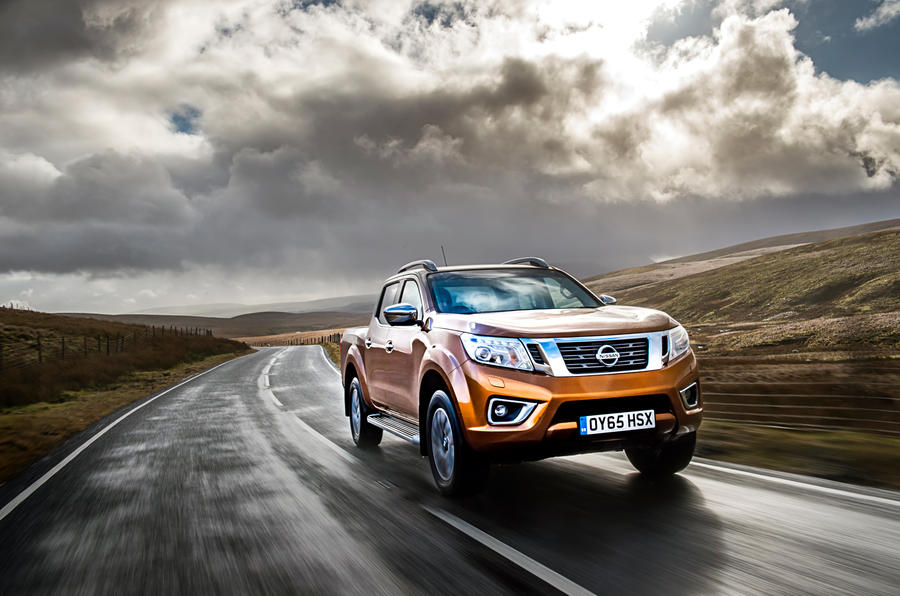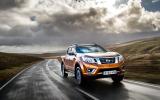What is it?
A facelifted Navara, which faces stiff competition from the revamped Mitsubishi L200, and the refreshed Ford Ranger. The battle lines are being drawn to see which can stake its claim as class leader.
Nissan has been thorough with its revised pick-up. Its chassis and four-wheel drive system have been modified, and the Navara is fitted with a downsized 2.3-litre diesel engine to improve fuel economy and emissions.
The engine is available in two power outputs: a single-turbocharged version producing 158bhp and a twin-turbo with 187bhp. There are also three body options to choose from: Double Cab, Super Cab and the new Chassis Cab option.
As for the Navara's carrying capacity, its load bed can hold a one-tonne payload, and it also has the ability to tow 3.5 tonnes; this puts it on par with the Ford Ranger and the Isuzu D-Max on both counts.
Nissan believes the Double Cab Navara will attract 90% of buyers and has endeavoured to give it better on-road characteristics with five-link rear suspension. Its rear seats have been adjusted to increase comfort too.
Each of the five trim levels comes with a wealth of standard equipment, starting with functional Visia trim, which includes 16in steel wheels, manual air conditioning, cruise control and forward emergency braking.
Range-topping Tekna comes with a sat-nav, 360-degree camera, LED headlights, leather seats, heated front seats and dual-zone climate control. To match this move towards making the Navara more a passenger-orientated vehicle Nissan has increased its warranty to five years too.
What's it like?
It is easy to get comfortable in the Navara NP300 because its seats are supportive and widely adjustable, while our model's leather steering wheel, handbrake and glossy black dashboard trim gave the interior a sense of quality and familiarity to that of Nissan's smaller Nissan Qashqai and Nissan X-Trail.
However, while soft-touch plastics do feature within the Navara’s cabin, hard plastics dominate. At least, it feels well put together and robust enough to deal with a tough working life. The rear seats are comfortable, although the high floor makes it difficult for tall adults to get fully comfortable.
Starting the Navara brings a gruff rumble from its engine, and on the move there's a distinct diesel rattle - it gets thrashier the more the engine is pushed. Under acceleration the noise of the 2.3-litre unit is replaced by plenty of turbo whoosh.
The 187bhp car's performance feels muscular from low revs thanks to its twin-turbo set-up that gets it up to speed fairly swiftly. Our test car was fitted with a seven-speed automatic gearbox, which in the large part is smooth, but does have a tendency to hold on to gears for too long, which can be irritating as well as harmful to the NP300’s economy. Still it's preferable to the manual 'box, which has a long, vague throw.
As for the handling, Nissan has clearly spent a lot of time developing its five-link rear suspension set-up for the Navara, and it certainly helps the ride. That is not to say the pick-up judder has been completely eradicated, but it is certainly suppressed far better than before. Shallow potholes and road imperfections are rarely noticed in the cabin, although bigger protrusions at speed still cause the unloaded rear axle to become unsettled.























Join the debate
Add your comment
Lack of thoroughness
Yes we know all about the plastics !
Navara NP300
All we know comparison wise is that it can tow 3.5 tonnes like the Ford Ranger and Isuzu D Max.
I would suggest if the report is t be meaningful you should test the vehicle loaded and also with 3.5 tonnes on the towbar to compare how well it performs the task.
We do know from this report that 'the sharp detailing makes this a better package all round than the others'....what is this rubbish, is this really supposed to make a pick-up buyer purchase decision clearer?
On the other hand, probably better all-round to leave reporting on vehicles such as this to specialist magazines who will make a proper comparison...don't you think?